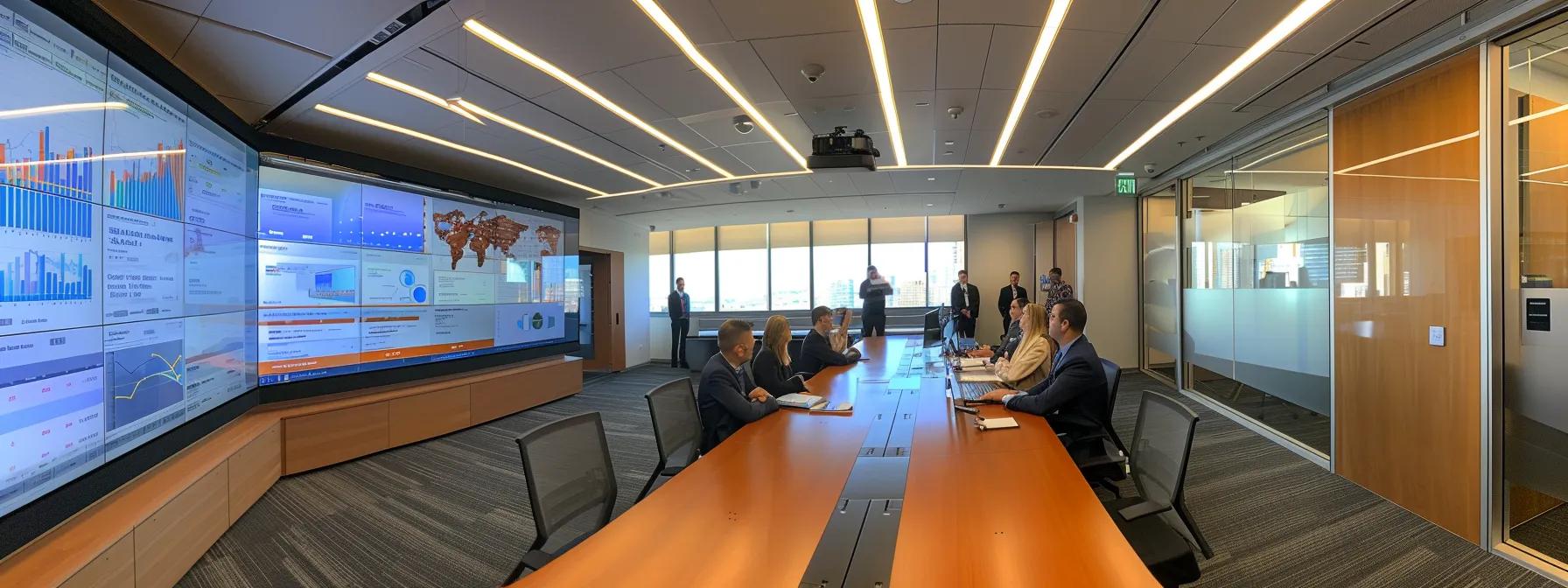Key Reasons to Choose High Risk Cover for Insurance Needs
Introduction
High risk cover is essential for businesses operating in industries where the possibility of significant financial or legal liabilities is substantial. Companies involved in scaffolding, labour hire, security services, and other high-stakes sectors require specialised insurance solutions that provide robust protection against claims, damages, and unexpected losses. High risk cover not only safeguards assets but also offers peace of mind by ensuring that any potential claims do not cripple operations. This article discusses the multifaceted advantages of high risk insurance cover, dispels common misconceptions, compares it with standard policies, outlines how to choose the right provider, and reviews premium costs along with real-life case studies that validate the need for specialised cover.
Transitioning into the main discussion, the following key points provide a snapshot of the benefits and legitimacy of opting for high risk cover.
Key Takeaways
- High risk cover offers comprehensive protection tailored to industries with elevated exposure to liabilities.
- Misconceptions about high risk insurance are clarified, revealing that it is both necessary and accessible.
- Comparison with standard policies highlights the enhanced benefits and claim processes offered by specialised cover.
- Choosing the right provider and understanding premium structures can drive long-term savings and financial security.
- Real-life case studies affirm the importance of high risk cover in mitigating severe operational risks.
Understand the Benefits of High Risk Insurance Cover for You

High risk insurance cover is uniquely designed to address the specific challenges faced by businesses in perilous industries. One major advantage is the enhanced protection against significant liabilities, ensuring that any major incident does not result in crippling financial losses.
Identify the Unique Advantages of High Risk Insurance Policies
High risk cover typically includes higher limits, broader definitions of coverage, and more responsive claims support compared to standard policies. This type of cover is essential for businesses that deal with high-value equipment or hazardous operations.
Recognise How High Risk Cover Protects Against Specific Risks
By customising policies to address industry-specific challenges, high risk cover mitigates the financial impact of incidents such as property damage, public liability claims, and legal liability for injuries. Regulatory compliance is often part of the cover, reducing the risk of fines or legal complications.
Learn How Personalised Coverage Suits Your Individual Needs
Insurers tailor policies to the unique operational risks of each business. This bespoke approach means that the cover reflects the individual risk profile and operational intricacies, ensuring maximum relevance and efficiency.
Examine the Financial Security High Risk Cover Can Provide
With higher claim limits and sophisticated risk management strategies, high risk cover provides robust financial security, preventing catastrophic losses.
Realise the Potential for Long-Term Savings With High Risk Cover
Strategic use of high risk insurance can lead to overall financial savings by lowering premium costs through risk mitigation practices and reducing claim payouts over time.
Discover How High Risk Insurance Improves Peace of Mind
Ultimately, the security provided by high risk cover allows business owners to focus on growth without the constant worry of unforeseen disasters disrupting operations.
Investigate Common Misconceptions About High Risk Insurance

There are numerous myths surrounding high risk insurance that often deter businesses from exploring these specialised policies.
Clarify the Myths Surrounding High Risk Insurance Coverage
One common misconception is that high risk cover is prohibitively expensive. In reality, while premiums may be higher than standard policies, the tailored benefits often provide superior overall value.
Understand the True Cost Factors of High Risk Policies
Costs are determined by specific risks and the level of coverage required. Premiums reflect the risk profile and safety practices of the business rather than arbitrary pricing.
Learn About the Accessibility of High Risk Insurance Options
Contrary to popular belief, high risk insurance is widely available and offered by numerous specialised providers, making it accessible to businesses of various sizes.
Address the Notion That High Risk Cover Is Unnecessary
For companies with higher exposure to liability, neglecting high risk cover can lead to devastating financial consequences; thus, it is not a luxury but a necessity.
Explore the Industries Most Prone to High Risk Insurance Needs
Industries such as construction, mining, and labour hire inevitably encounter higher risks, making specialised cover critical to their continued operation.
Dismiss the Fear Associated With High Risk Insurance
By understanding the tailored nature and resilient structure of these policies, businesses can see high risk cover as a smart, proactive approach rather than a burden.
Compare High Risk Cover to Standard Insurance Options

When evaluating insurance policies, it is crucial to highlight the differences between high risk cover and standard insurance options.
Highlight Differences Between High Risk and Standard Policies
High risk cover often provides broader protection, higher limits, and more specific inclusions that standard policies lack. This can include extended coverage for unusual liabilities specific to high-risk industries.
Assess Coverage Limitations and Exclusions in Standard Insurance
Standard policies sometimes contain exclusions that leave high-risk exposures unprotected, increasing the business’s vulnerability during a claim.
Evaluate Premium Differences Between High Risk and Standard Cover
Though costlier upfront, high risk cover offers better value in situations where the risk of large claims is high. Premiums for high risk policies are calculated with a more nuanced understanding of actual risk, potentially reducing overall expenses over time if managed properly.
Discuss Claims Processes in High Risk Versus Standard Insurance
The claims process for high risk cover is typically more streamlined, with dedicated support teams that understand the complexities of high-value claims.
Look Into Customer Support and Service Quality Comparisons
Specialist insurers provide tailored customer support and proactive risk management advice, critical for high-stakes industries where every minute counts.
Identify Scenarios Where High Risk Cover Is the Best Choice
In scenarios involving high financial stakes, such as large-scale construction projects or operations involving dangerous machinery, high risk cover ensures business continuity and limits potential losses.
Explore How to Choose the Right High Risk Insurance Provider

Selecting a provider for high risk cover requires careful evaluation of several factors to ensure comprehensive, reliable protection.
Research Key Factors to Consider When Selecting Providers
Look for providers with a track record of handling high-value claims and a deep understanding of industry-specific risks.
Investigate Customer Reviews for Better Insight on Providers
Customer feedback and testimonials provide insight into the reliability and efficiency of an insurer’s claims process and customer service.
Analyse Policy Terms and Conditions Carefully
Policies should be scrutinised for coverage limits, exclusions, and conditions to ensure they meet the business’s specific risk profile.
Evaluate the Financial Stability of High Risk Insurers
An insurer’s financial strength is critical, as it indicates the ability to pay out large claims without jeopardising business stability.
Examine the Claims Process and Support Services Offered
Providers that offer efficient claims processing and dedicated support services typically provide a better overall insurance experience.
Seek Recommendations From Trusted Sources in the Industry
Industry peers and professional associations often provide valuable recommendations and insights into the most reputable insurers in the high risk arena.
Learn About Premium Costs and Coverage Options

Understanding the structure of premium costs and the variety of coverage options is fundamental for making an informed decision.
Break Down Factors Affecting Premiums in High Risk Insurance
Premiums are influenced by elements such as the industry risk profile, safety practices, claim history, and regulatory environment.
Compare Different Levels of Coverage Within High Risk Policies
High risk cover can often be customised with varying levels of protection, allowing companies to balance cost and comprehensive coverage.
Understand Deductibles and Their Impact on Premiums
Higher deductibles may lower premium costs but also increase out-of-pocket expenses during claims; understanding this balance is vital.
Identify Optional Add-Ons That Enhance High Risk Cover
Additional features like cyber liability, professional indemnity, or business interruption can be added based on industry-specific needs, thereby providing more comprehensive protection.
Discover How Lifestyle Factors Influence Premium Costs
Industry practices, operational size, and safety protocols directly affect premium calculations, making risk management a key strategy for cost reduction.
Assess Payment Plans and Flexibility of High Risk Insurance
Flexible payment options and customised plans enable businesses to manage cash flow effectively while maintaining robust protection.
Final Thoughts
High risk cover is not just an expense; it is a strategic investment that safeguards businesses against potentially devastating liabilities. By understanding the unique benefits and debunking common myths, businesses can make informed decisions that secure their long-term financial stability and operational continuity. Choosing the right provider and assessing premium structures further ensures that companies receive tailored, effective protection. Ultimately, high risk cover offers peace of mind and acts as a critical safety net in industries where risks are inherently elevated.
Frequently Asked Questions
Q: What makes high risk cover different from standard insurance?
A: High risk cover is specifically designed for industries with higher liabilities, offering higher limits and tailored policy options that standard insurance policies do not provide.
Q: How do premium costs for high risk cover compare to standard policies?
A: Although premiums for high risk cover can be higher, they reflect the specialized protection provided and may lead to cost savings over time by mitigating significant claims.
Q: Can high risk insurance be customized for my business needs?
A: Yes, providers offer bespoke policies based on specific operational risks and individual business profiles, ensuring comprehensive protection tailored to your industry.
Q: Is high risk cover accessible for small businesses?
A: Many insurers now offer flexible, scalable high risk cover options designed to meet the needs of both large and small businesses, making it accessible across various sectors.
Q: What should I consider when choosing a high risk insurance provider?
A: Important factors include the provider’s expertise, financial stability, customer reviews, claims process efficiency, and the specific terms of the policy being offered.

